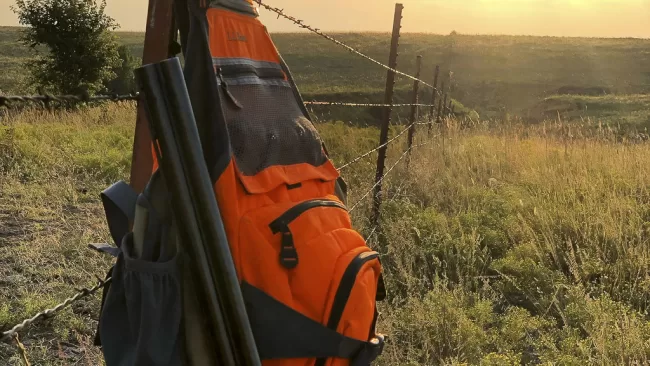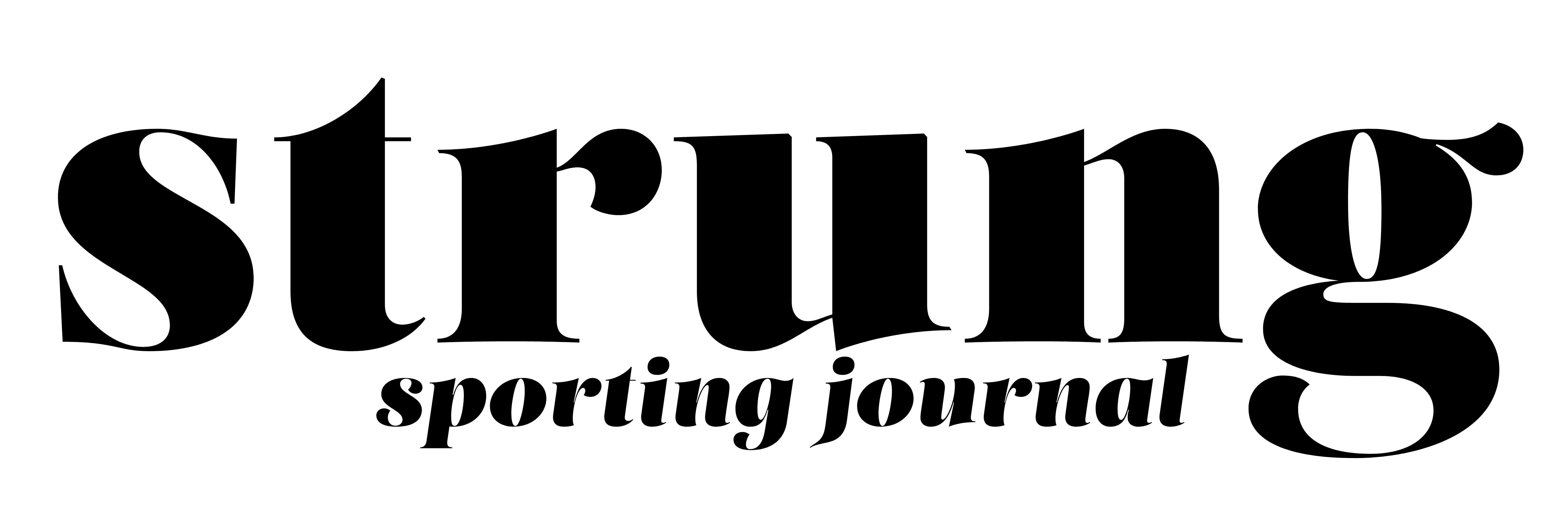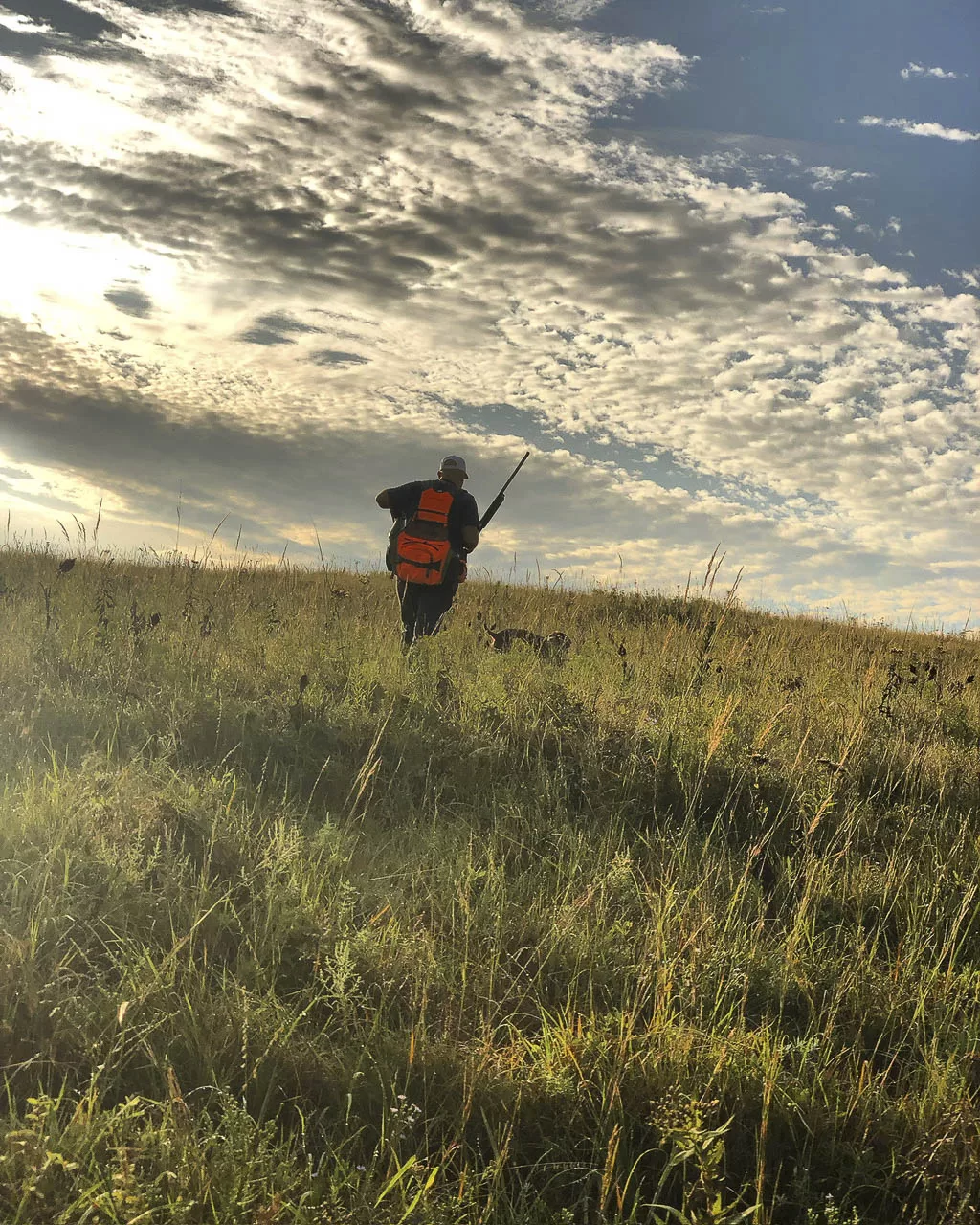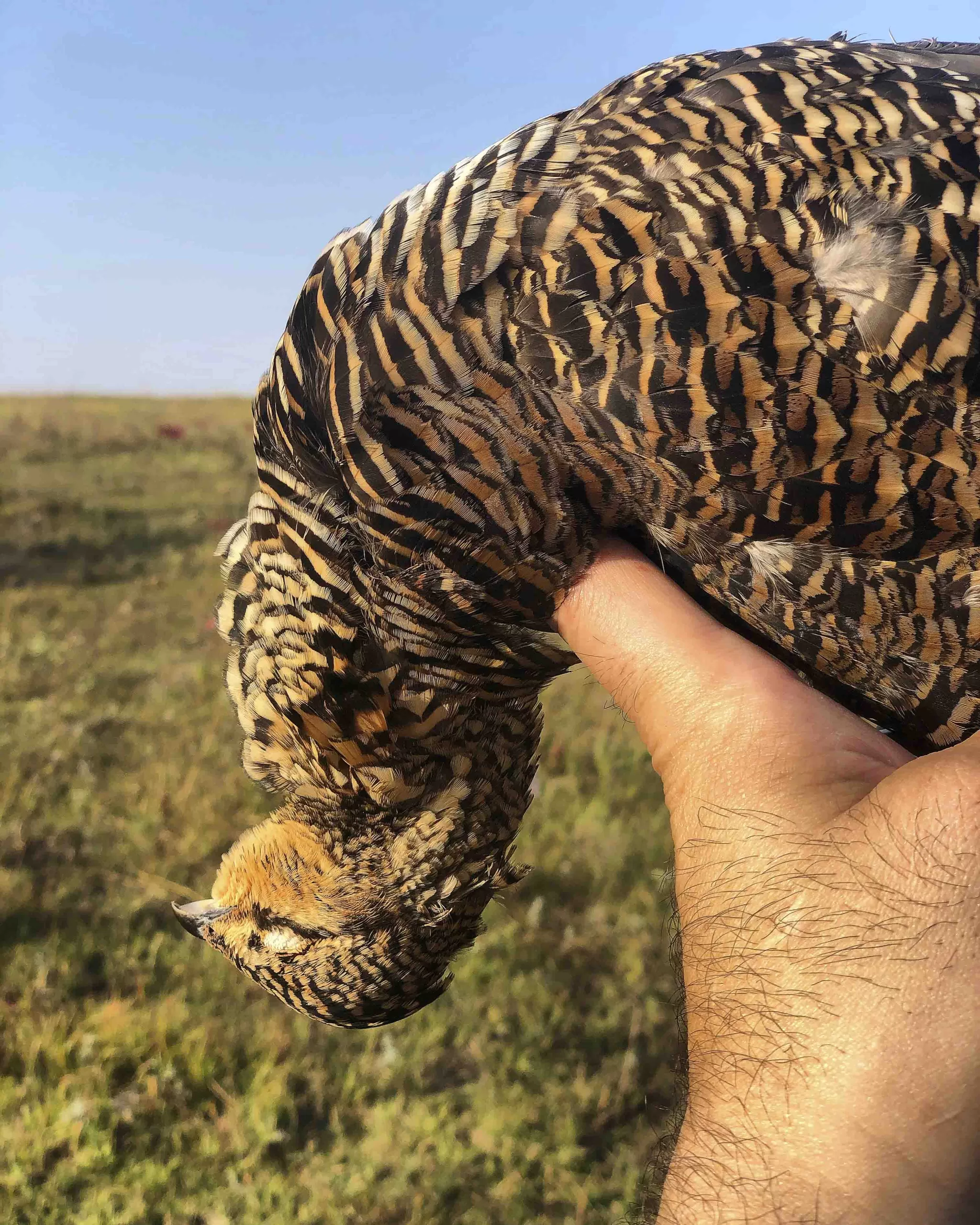Greater Prairie Chickens – An Expert’s Guide to Hunting The King of the Prairie
Edgar Castillo
Editors Note – always check the latest regulations and dates on your respective state’s website. As of this posting on 9/13/24, the greater prairie chicken season in Kansas opens on 9/15/24 and closes on January 31, 2025. For hunting purposes, greater prairie chickens are mainly found in Nebraska, South Dakota, and Kansas. This post is on greater prairie chickens only – lesser prairie chickens are listed as threatened species, making it illegal to hunt them.
Prairie Chicken History and Habitat
To most wingshooters, the allure of hunting prairie chickens includes breathtaking landscapes and wide-open spaces interspersed with gentle, rolling hills. Once numbering in the millions across several states, prairie chickens have seen both their range and population diminish drastically. But the King of the Prairie still commands the spirit of the American West like no other. A prairie chicken taken on the wing is nothing short of a trophy.
Prairie chickens are now found only in isolated pockets spread throughout a handful of states including Nebraska, South Dakota, and Kansas. In Kansas, the Flint and Smoky Hills are considered traditional strongholds for the birds. Kansas went away from a split season for prairie chickens and now has a continuous season. September 15 signals the start, ending just over four months later on January 31. The daily limit is two, with a possession limit of eight.
During the early part of the season, the birds are not flocked up, but rather scattered throughout the prairie in singles and/or small groups. Prairie chicken habitat consists of open, flat country made up of sparse, native grasses, combined with rolling, elevated grasslands. The most common tactic to locate early-season chickens is to hunt behind big-ranging pointing dogs as they sweep across the land. Birds tend to hold, but not always; they are very skittish. Flushes of more than 50 yards are common. Often, there’s far more land than there are chickens.
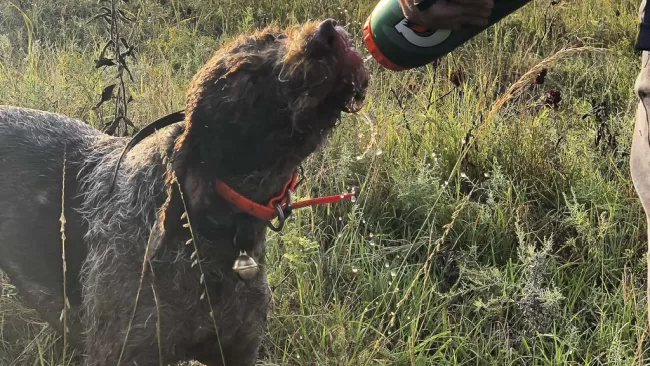
Below is a four-pronged approach to hunting prairie chickens. Try these techniques and tactics and modify them depending on location and the type of habitat, and they may just help you harvest that most prized possession of the grassland plains.
Locate
Most hunters accidentally come across prairie chickens while hunting other upland birds. Chickens will either flush from their feeding or loafing areas or be observed going to and from such locations. During the early season, chickens feed mostly on insects that are still abundant. The birds will also take advantage of crops in nearby agricultural fields. If you can find where they’re feeding and ascertain where they’ll fly to and from, then you’ve taken a big step towards completing the puzzle.
After feeding, the birds will look for a place to loaf. Look for prairie chickens flying, using a unique combination of rapid wing beats followed by a long glide. Use their flight path to your advantage. This is where the use of binoculars will benefit the upland bird hunter. Glassing for birds is an overlooked tactic. The prime time to catch birds in the air is in the early to late morning or evening when they are flying to ridges, high points, hillsides, and thickets in search of cover. Chickens will often set up on high points of open terrain or on the shady side of a hill. These high-ground areas with knee-high or shorter grass provide them with security from predators. If you’re in thick “pheasant habitat,” you’re in the wrong place.
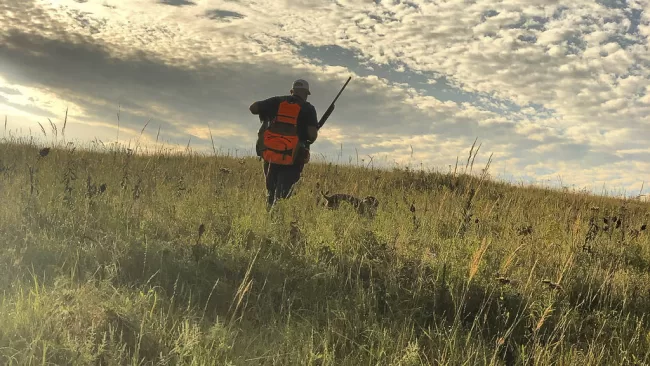
Prairie chickens will frequently inhabit the same general area year after year. Take notice of the location, as they will likely continue to use the spot, especially if it’s an established lek (also known as booming grounds, where males will gather to dance and boom). Hunting pressure may disperse them temporarily, but they will return if it’s an established location. This is where a mapping app comes into play and becomes invaluable in organizing collected data from the field.
Hunting prairie chickens calls for lots of walking across big expanses. Wingshooters should focus on working the ridges, but don’t overlook bowls.
Find Relief
Late summer can be quite warm in Kansas, so the focus on finding chickens should be to do what you and I would do when the temperature starts to climb: Find a bit of relief in the shade. Shade, whether in the form of hillsides, shrubs of red sumac, or on the shady side of slopes or light cover, are good places to focus when hunting. Look for a nearby water source, if possible.
Sneak In
Once you locate where prairie chickens tend to congregate, getting close enough to fire a shot is a difficult task. Look for features in the landscape and use the terrain to your advantage. Keep in mind that you want the wind in your face as well as the dogs’. Using the contours of the land, get as close as possible without being seen. Use the hillside slopes and any dips to mask your approach.
Maneuvering from two sides into the area where you suspect you’ll find chickens will increase your chances. If hunting with a partner, send them wide and have them approach from the other side of a hill or natural feature, such as a shelter belt, covering the side or back door. Keep a close eye on the dog, because when they go on point, chickens may or may not be as close as you think. Birds may be farther out than expected. Hunters should walk up quickly and be ready to shoot.
Stragglers
If everything goes as planned and chickens flush and shots are fired, reload quickly and stay alert. Chances are high there’s going to be a straggler or two waiting for the right moment to burst from the grass. Hunters often make the mistake and assume that all the birds have gone with the initial covey rise. It’s important to continue to watch the dog for signs that they’re still birdy. Walk slowly, zigzagging through the area, ready for a second delayed flush. It is in these times that hunters drop their guard and are startled with a second series of clucks and fluttering of wings.
Gear for Hunting Prairie Chickens
Prairie chicken hunting calls for lots of walking, which may include up and down hills. Carry a shotgun that is comfortable and light, if possible. Any gauge will suffice—12, 20, 16, or 28. Prairie chickens are delicate birds and fold quite easily. Recommended shot size includes 7 or 7 ½, with 6s as a follow up for those longer-distance shots. Early-season chicken hunts call for an improved cylinder or a modified choke. Birds will tend to hold longer in heavier cover, but those that have the high ground or the ability to see what’s coming for them will flush far. A good pair of broken-in boots and a vest that can carry an adequate supply of water for both hunter and dog are key ingredients in September and October.
